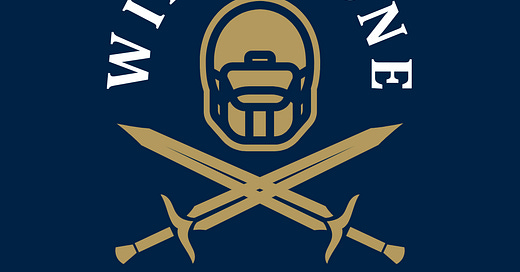The Most Important Down of the Drive
What are you calling on the most important down of the drive?

Awareness of the importance of the first down in a drive, commonly called “Possession & 10” or “P&10,” has risen greatly over the last few years as analytics have evolved. This first caught my attention listening to a podcast about a year and a half ago in which I heard that scoring rate triples with a gain of 3+ yards on the first play of a drive. I rewound the podcast a few times to make sure I heard it right, even revisiting the episode months later in preparation for an interview to make sure I wasn’t misremembering that stat. It stuck with me.
Why is this specific down so important? Why is it different than any other first down?
It’s first down. If the offense gets less than 3 yards, they are “behind the sticks” in most playcallers’ heads. Now it’s 2nd & Long. “We have to either throw for it or run a screen or draw to catch back up,” is a common thread. Pass incomplete. Draw gains 2 yards. Now it’s 3rd & Long, and we have to get every yard, not just a chunk of them. Pass complete for a gain of 5. Time to punt.
Similar sequences play out multiple times for each team in almost any football game, especially in the NFL. High schools and colleges (and even the NFL, to a lesser degree) are becoming more aggressive on 4th down, which can skew some of this data, but the idea remains that the first play of a drive is crucial for its success. In order to put together a drive, we have to get the first first down.
Now that we’ve established the importance of Possession & 10, what do you call? Do you risk a pass falling incomplete and being behind the sticks? Do you run the ball and risk a tendency there for a defense to run Cover 0 and stuff it?
This article is going to take a look at the data behind how the Shanahan/McVay tree handled P&10 in 2023 and draw conclusions from it. We’ll look at run/pass ratios based on field position in which the down is occurring, average yards gained for each, and next week, we’ll translate that into how it effects scoring rate. We will look at how each play caller handled the situation individually and overall stats from the tree. For more accurate stats, I have removed kneel-downs and no-plays due to penalties.
PACKERS
The Packers were one of the more well-balanced teams in the study in terms of run-pass ratio. This trend even holds true across most field zones. Where the data jumps is in the shadow of Green Bay’s own end zone. Heavy run tendencies (12R – 5P) inside the 10 yard line, which is expected by most, but between the 11 and 20, the data flips (6R – 16P).
The most interesting position to me on any P&10 is between the -21 and -30, as many drives start on the -25 due to touchbacks. The vast majority of these plays are going to be either the first play of the half or the offense’s first play after allowing a score, be it a touchdown or field goal. In either case, it’s potentially even more important in this range to get the drive off to a good start, to either set the tone for the half or give the defense time to correct and collect themselves. The Packers were evenly split at 33 plays a piece in this area of the field, both with relative success. Runs averaged nearly 5 yards, and passes averaged a bit more than enough to get that first first down. I would love stats on how many of those passes were play action vs drop back & quick game, but I don’t have those.
Overall, one of the most interesting data points to me in relation to the other teams is that the Packers had the least amount of success of the 4 running on P & 10 and the most amount of success of the 4 when passing, in terms of AVG Yards Per Play.
Keep reading with a 7-day free trial
Subscribe to Wide Zone Warriors to keep reading this post and get 7 days of free access to the full post archives.





